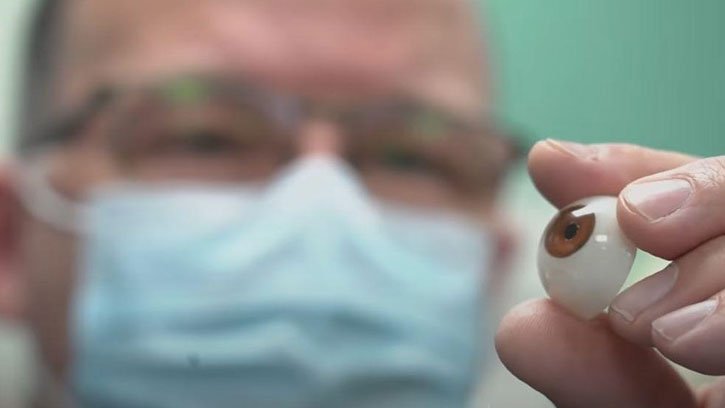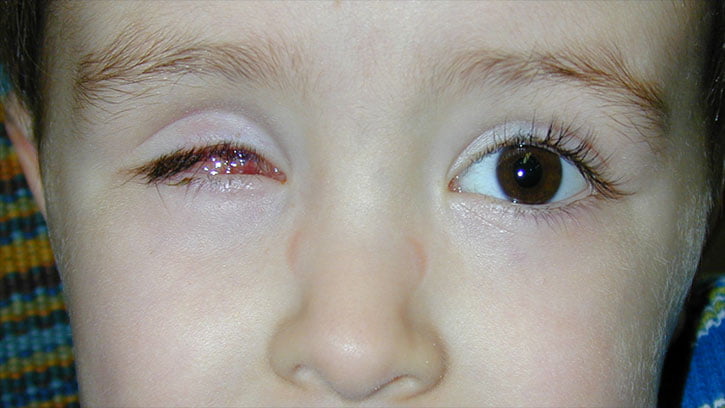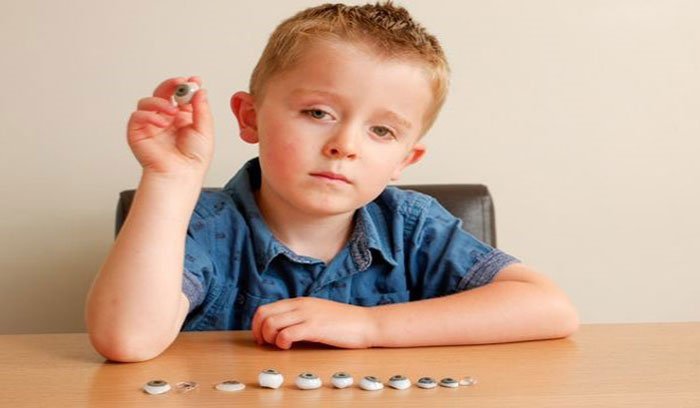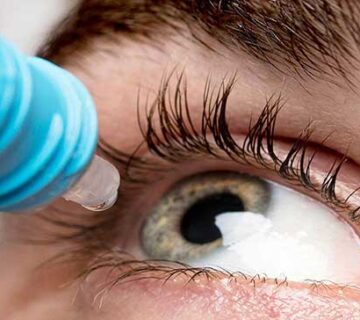Children’s eye prosthetics are a topic requiring special attention in the discussion of artificial eyes. The human body consists of various organs, each with its specific function. Among these, the eye is recognized as one of the most sensitive organs. The slightest injury to it can cause significant problems for an individual and severely impact their life. Therefore, the health of the eye, as a vital organ, is of paramount importance.
Children’s high activity levels and engagement in risky behaviors can lead to serious injuries to their bodies, particularly their eyes. Additionally, the onset of certain diseases such as cancer, infections, etc., can affect eye health and expose it to serious risks. In cases where the eye has lost its function and has been removed (enucleated), a device called an eye prosthesis can be used to preserve the individual’s appearance.
This article provides explanations regarding pediatric eye prosthetics and related considerations.
What is an Eye Prosthesis?
An eye prosthesis is essentially an artificial object that replaces an individual’s damaged eye and is placed in the enucleated socket. It’s important to note that eye removal can result from various causes, with issues such as severe trauma, congenital problems and abnormalities, penetration of sharp objects into the eye, explosions, eye diseases, etc., being among the most common reasons for this condition.

A key point to consider is that this issue is not exclusive to adults; it can also occur in children. Furthermore, it should be mentioned that eye prostheses come in various types, and each is used according to the patient’s needs.
Everything About Infant Eye Prosthetics and Related Considerations!
If a child’s eye is damaged for any reason—such as congenital abnormalities, severe trauma, eye diseases, cancer, etc.—and there is no alternative to its removal, the enucleation surgery and fitting of an artificial eye should be performed as quickly as possible. Of course, it’s important to note that there are significant issues and points to consider in this regard, which are discussed below.
When Should a Child’s Eye Prosthesis Be Fitted?
As mentioned earlier, eye enucleation and fitting of a pediatric eye prosthesis are generally necessary due to the occurrence of eye cancers, injuries, uncontrollable infections, blindness in the eye, etc. Therefore, if any of the above situations occur, it is essential to promptly consult a pediatric ophthalmologist to prevent further complications.
Using an eye prosthesis in children facing this problem offers many advantages, making its use unavoidable. In some cases, the damaged eye might protrude from the orbit, negatively affecting the child’s appearance. However, using an artificial eye can significantly improve this situation and reduce its negative effects.
After the eye enucleation surgery, typically two to four months are required before fitting an artificial eye in children. This artificial eye will be a very suitable replacement for the lost eye and, when correctly positioned in the affected area, will function remarkably similarly to a natural eye. It’s worth noting that with the use of these prostheses, the child can easily perform the blinking process.
It’s important to know that the artificial eye can generally remain in the eye socket and does not need to be removed frequently. However, in some cases and on the advice of the ocularist (prosthetist), it may be necessary to remove it.

Can Children’s and Infants’ Artificial Eyes Be Removed from Their Socket?
In answer to this question, yes, you can remove the artificial eye after the surgery and its placement in the child’s head, if necessary. However, this requires significant care, and with practice over time, you can perform this process well. Below are explanations regarding some methods for replacing eye prostheses in children and infants.
What is the Best Method for Inserting an Eye Prosthesis in Infants?
In some cases, it may be necessary to remove the eye prosthesis from its socket. It’s crucial that in these situations, the removal process is performed correctly and optimally. With a bit of practice, repetition, and patience, you can gain the necessary proficiency for doing this. For replacing a child’s eye prosthesis, it’s better to consider the following steps:
- Wash your hands thoroughly with soap to prevent the transfer of contamination.
- Always clean the eye prosthesis using contact lens solution or baby shampoo.
- Try to use a special suction cup (prosthesis remover) to remove the artificial eye.
- Now it’s time to insert the prosthesis into its socket. To place the prosthesis, first hold it between the thumb and index finger of one hand. Then, using the thumb of your other hand, gently lift the upper eyelid and place the artificial eye under it.
- Use your index finger to position the prosthesis under the eyelid, precisely in its designated place. Always try to perform all steps gently, patiently, and with full care.
- In the final step, use your thumb to gently pull the lower eyelid downward. This should be done so that the lower edge of the prosthesis rests correctly behind the lower eyelid margin. If the prosthesis is correctly positioned, all the eyelashes will be visible.

How Long Can an Artificial Eye Last?
Generally, it’s impossible to give a specific number for this, as various factors are involved. The lifespan of an eye prosthesis depends on several factors, including the child’s age, growth rate, physical activities, and how well the prosthesis is cared for. If all care instructions are followed, the lifespan of the eye prosthesis in children will increase.
Should the Eye Prosthesis Be Removed When the Child is Sleeping?
There is no reason to do this! When the eye prosthesis is correctly fitted, frequent removal is not recommended. However, in the initial days, some discomfort may occur for the child due to not being accustomed to the artificial eye, but this will resolve over time.
Important Note:
Since the child’s healthy eye may still be at risk of injury even after prosthesis placement, it is essential to use plain (non-prescription) protective glasses. These glasses can deflect potential impacts towards the healthy eye and prevent injury to it.
Conclusion
If a child’s eye suffers serious damage due to illness or accident, a surgeon should be consulted immediately to prevent further complications. Also, if the child’s eye is enucleated, an eye prosthesis should ideally be fitted promptly so the child doesn’t suffer excessively from the weakness created in that area. Furthermore, it’s important to perform the necessary care to extend the lifespan of the artificial eye.
Mahan Specialized Artificial Eye Clinic, as the first scientific center for artificial eye fabrication in Iran, utilizes the best specialists in this field and offers the most diverse collection of artificial eyes in the country. Dear clients, for consultation and price inquiries, you can contact our experts:
In person by visiting the address listed in the “Contact Us” section.
By phone at: 00982166889076 or 00989128357509.




No comment